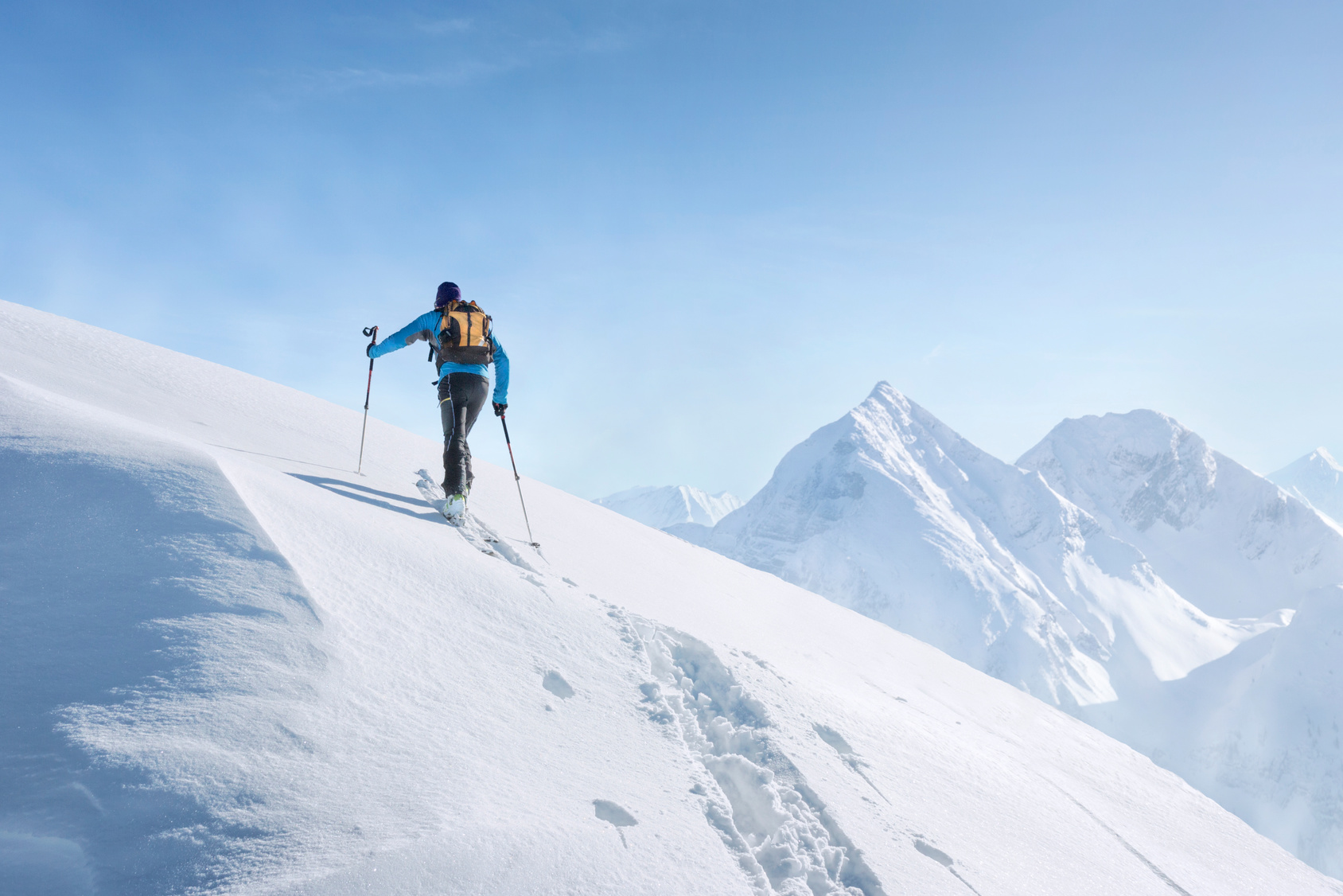A dummy’s guide to skiing the Haute Route


For some, the Haute Route is only ski tour in the world, because it’s the best; for many box-tickers it’s the only one because they don’t know there are any others. So, it’s a bit of a shock to find that even when you’re talking about the Chamonix–Zermatt HR as opposed to any of the others, there are lots of variations of this route alone. It started as a walking route completed by many climbers in mountaineering’s ‘golden age’ about 150 years ago. The first successful effort on skis was in 1911.
It actually starts in Argentière, saving a few kilometres. You can also do the whole thing in reverse – it still counts. Either way, the true classic includes crossing the Plateau du Couloir, taking in the Valsorey and Chanrion refuges – more serious than what passes nowadays for the standard route (normally via Verbier) – but still an option.
The route in outline, with huts: Grand Montets, Argentière refuge, Col du Chardonnet, Trient refuge, Col Ecandies, Champex to Bourg St Pierre by road, Valsorey refuge, Plateau du Couloir, Chanrion refuge, Vignettes refuge, Col l’Eveque, Col Valpelline, Schonbiel hut, Zermatt. Phew.
With most things mountainous, as with much of life, you might be able to do a thing by sheer force of will, but it doesn’t mean to say it will be much fun. The HR has been completed by novice skiers and by people carrying too many kilos (on both the arse and in the rucksack), but to make the trip and enjoy it you must be a competent all-round off-piste skier (coping with perfect powder on enormous fatties doesn’t count), as well as fit for the uphill, with the emphasis on endurance for long days.
More important than putting in amazing turns is a basic ability to stay upright in crud, breakable crust, on ice – you name it. A decent kick turn, both up- and down-hill is an energy-saver, possibly even a life-saver, and will at least prevent a serious spill in tricky conditions. When your guide tells you not to fall on a certain section, he’s not joking and you must have a strategy up your sleeve.
The mountaineering component of the trip is not particularly technical, but experience of using an ice axe and crampons doesn’t hurt; as with the downhill skiing part of it, having energy in reserve allows you to cope with the technical stuff even if it’s new to you, though best of all is fitness and experience.
Hut to hut tours are measured not by kms travelled but by huts – one hut per day, with no rest days unless enforced by bad weather. So, the classic HR is normally seven days to Zermatt; allow extra if you avoid the road from Champex by diverting to La Fouly and on via the Col Grand St Bernard – not the classic route but a good one.
How long each day is depends mainly on vertical ascent, but expect to be climbing for five hours and more, and sometimes underway for more than twice that, usually starting early and aiming to finish by early afternoon, later in spring when it warms up. The ski down is a tiny fraction of that time.
The standard HR huts are well-used, coping with hundreds of skiers, day after day. Conditions are relatively cramped (bring your earplugs to survive dorms), but standards are amazing when you consider where you are. For instance, the catering is performed without access to mains water but you still sit down to a good dinner each night. For the same reasons – lack of water – the toilets are not for the faint-hearted and there are generally no washing facilities, never mind showers.
Prices start from about £25 per night, half-board. Refuges are: Argentière refuge, Trient refuge, Valsorey refuge, Chanrion refuge, Vignettes refuge, Schonbiel hut.
The huts are generally open mid-March to May.
Graham Frost
Stuart Macdonald
Mountain Tracks
<iframe src=”<iframe width=”560″ height=”400″ frameBorder=”0″ src=”https://fatmap.com/routeid/1394221/classic-skiers-haute-route?fmid=em”></iframe>” frameborder=”” allowfullscreen=”” width=”100%” height=”680″></iframe>